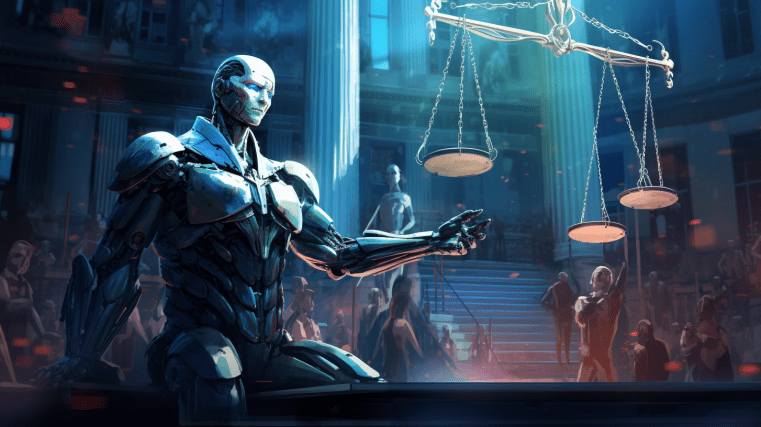Photo was created by Webthat using MidJourney
New AI Systems Collide with Copyright Law
The rise of generative AI systems has raised concerns among artists who have discovered their artwork being used without permission to train artificial intelligence. Companies like Stability AI companies, responsible for AI image generators like Stable Diffusion, Midjourney, and DeviantArt’s DreamUp, have faced lawsuits from artists like Kelly McKernan, Sarah Anderson, and Karla Ortiz. These artists are seeking more regulation and protection to prevent AI from replacing them in the creative process. The issue of copyright infringement has become more prevalent, with Getty Images also filing a case against Stability AI for unlawfully copying and processing millions of their images.
Artists Unite to Protect Their Work
As AI continues to advance, artists are joining forces to safeguard their creations from being exploited by predatory AI companies. Eva Toorenent and five other artists formed the European Guild of Artificial Intelligence Regulation to advocate for legislation that protects copyright holders and artists. They believe that artists should have the right to decide how their art is used and that default options should be “opt-in” rather than “opt-out” for AI platforms like Stable Diffusion. Artists have expressed frustration over the lack of protection under current copyright laws, which often fail to account for the business opportunities of generative AI.
Regulatory Response to AI Copyright Issues
Governments are reacting to the challenges posed by AI’s potential infringement of copyright. The EU AI Act proposes that AI tools must disclose any copyrighted material used to train their systems. In the UK, a global summit on AI safety is scheduled to address these concerns. Intellectual property lawyer Arty Rajendra highlights the need for clarity in the law, as courts are yet to determine if AI’s use of copyrighted material constitutes infringement and who should be held liable. Settlements and license fees may become common outcomes in AI copyright cases.
Protective Measures for Artists
While regulators work on comprehensive solutions, artists are exploring ways to safeguard their work. Getty Images employed watermarks to track the usage of their images, enabling them to monitor any unauthorized AI-generated content. Professor Ben Zhao and his team at the University of Chicago developed Glaze, a free software tool to protect artists against generative AI models. Glaze alters images in a way that confuses AI models, making their mimicry inaccurate and useless. Artists have welcomed this tool, with thousands of downloads and widespread positive feedback.
Artists Remain Hopeful Amid Public Support
Despite initial skepticism and online harassment, artists are feeling optimistic as public opinion shifts in their favor. The “adapt or die” sentiment that initially prevailed has evolved, with more people acknowledging the importance of protecting artists’ rights. The united front of artists and their support networks has strengthened their position, as they continue to fight for greater legal protection against AI exploitation.
The Way Forward for AI Companies and Copyright Law
As AI technologies continue to evolve, the intersection with copyright law becomes increasingly complex. The ongoing legal proceedings and emerging protective measures indicate that this issue will remain at the forefront of AI regulation. Artists, AI companies, and lawmakers must work together to strike a balance that safeguards both creative expression and technological advancement. While challenges persist, the hope is that a clearer and fairer framework will emerge to protect artists and their work in the age of AI.


